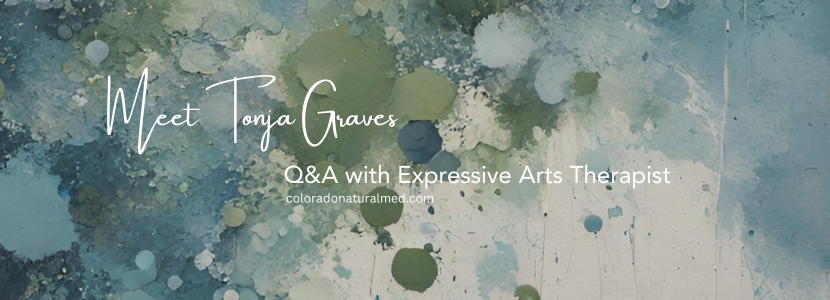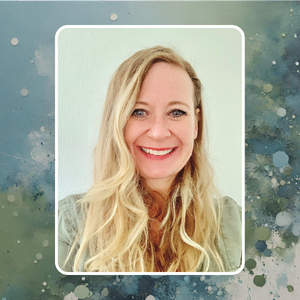
Meet Tonja Graves, an expressive arts therapist dedicated to guiding individuals on transformative journeys of self-expression and holistic healing. With over 28 years of expertise, Tonja has crafted a unique approach that combines art therapy, sandtray therapy, play therapy, and various counseling techniques to support clients through anxiety, grief, complex bereavement, and life transitions.
In this Q&A, Tonja shares insights into her background, areas of specialization, therapeutic techniques, and the profound impact of expressive arts therapy on individuals dealing with trauma and emotional challenges. Join us as we explore the vibrant world of expressive arts therapy through Tonja’s expertise and compassionate perspective.
Q: Can you tell us about your background as an expressive arts therapist?
“From a young age, I have been drawn to expressing myself through art materials. For the last 28 years, I have been guiding others through this process as well. I received a Master of Professional Studies in Art Therapy and Creativity Development from Pratt Art Institute in New York in 2003 as well as a Master of Fine Art in Visual Arts from Azusa Pacific University in California in 2013. I have experience working with clients in the following settings: inpatient psychiatric facilities, educational settings (preschool through graduate level), nursing homes, and private therapy practice.”
Q: What age groups and demographics do you typically work with in your therapy practice?
“I see children and adolescents 4-16 of all genders, and women ages 18 and up.”
Q: What are your areas of expertise or specializations within expressive arts therapy?
“I specialize in anxiety, grief, complex bereavement, and life transitions.”
Q: What are the various modalities and techniques you use within therapy, and how do you tailor your approach to each individual’s needs?
“I use the following techniques in the therapeutic process: art therapy, sandtray therapy, play therapy, cognitive behavior therapy, emotional freedom tapping, dialectical behavior therapy, and psychodynamic talk therapy. I combine different forms of the creative arts which entail visual arts, movement, music, writing, and drama. I tailor the session for the individual, taking into account the treatment goals, the client’s personality, and what materials the client is naturally drawn to.”
Q: How do you typically approach therapy sessions? Could you describe your therapeutic style and what clients can expect when working with you?
“I approach each therapy session with compassion, integrity, intuition, and playfulness. The initial goal when I meet a new client is to create a safe therapeutic environment to build rapport. Clients can expect to work through internal conflicts in a gentle, playful, and safe way. A sense of humor can hold light in the darkest of places. Even though I am guiding clients through deeply painful experiences, I also foster an environment where joy and laughter are a necessary part of that healing process.”
Q: How can art therapy be particularly effective in helping children and women deal with trauma or emotional challenges?
“I believe we are all inherently born as creative beings; therefore, it is necessary to reflect this in the therapeutic process. The beauty of creation is that it is in a constant state of change; humans are no different. Trauma can disrupt an individual’s desire to creatively express oneself, and make it challenging to build or keep connections. Art therapy is used as a way for clients to create connections again.”
Q: Expressive arts therapy is known for its holistic approach. How do you address the emotional, psychological, and even physical aspects of well-being in your sessions?
“I work as a somatic psychotherapist to engage clients in the mind-body connection. I help bring awareness to clients as to how the mind processes and stores experiences in the body. I use the expressive arts as a tool for clients to visually see this connection as well as a way to build coping skills.”
Q: Finally, for individuals who might be considering expressive arts therapy for the first time, what advice or insights would you offer to help them feel more comfortable and informed about the process?
“The term art can be one that intimidates individuals due to the weight of feeling like one has to create a product. Art therapy is the opposite of creating for the sake of art. Think of the expressive therapies as a way to actually take the pressure off of talking, it alleviates articulating painful experiences within the therapeutic setting. The expressive arts also make traditional talk therapy less stagnant. I was born an introvert; I can go long periods of time without talking. Therefore, I do not want clients to feel the pressure to have so many words they have to say in a session. The modalities I offer are there as a communication buffer between you and the reason you are seeking therapy. Spontaneity is part of the expressive arts therapy process. The different modalities and techniques I use provide clients with a break from trying to control their thoughts; their body is given the opportunity to communicate instead.”
Tonja Graves is currently accepting new patients at Colorado Natural Medicine + Acupuncture. If you live in Castle Rock / Douglas County area and want to learn more, please use the following link to schedule a FREE 15 minute phone consult with Tonja or call 303.688.6698.


Leave a Reply